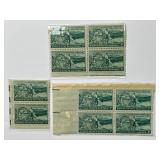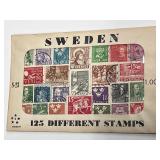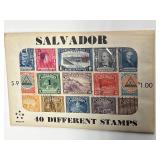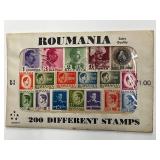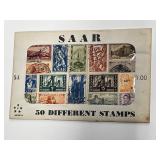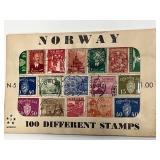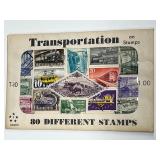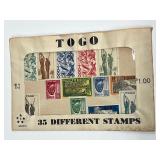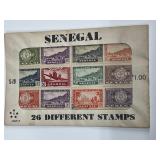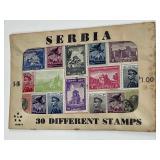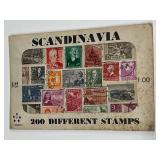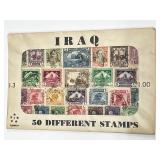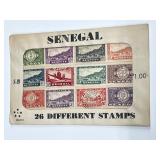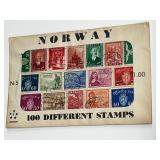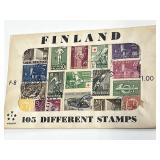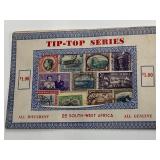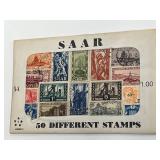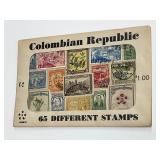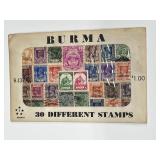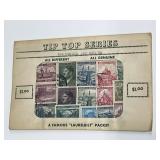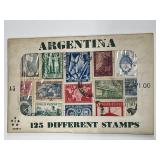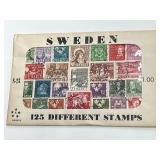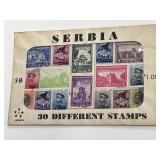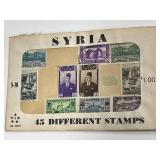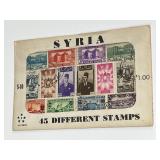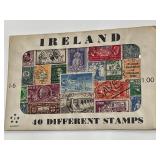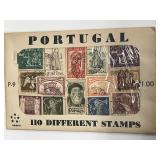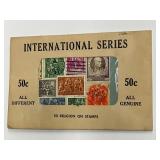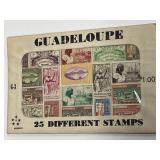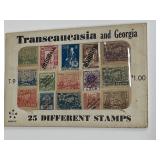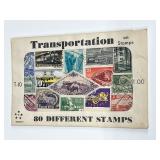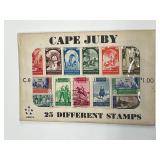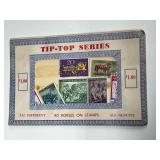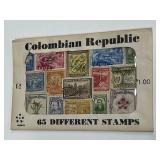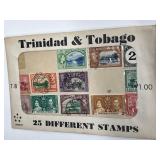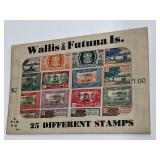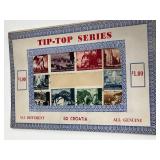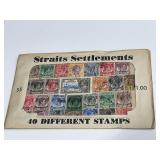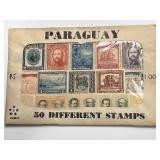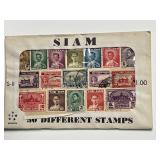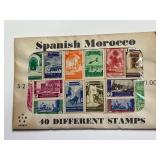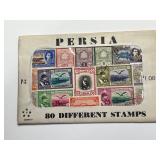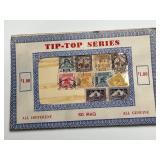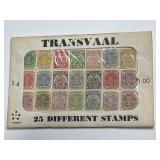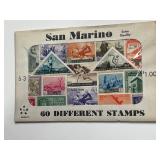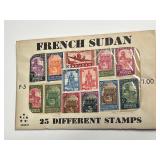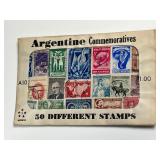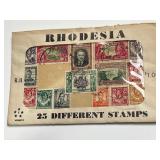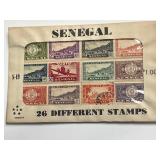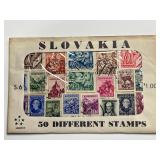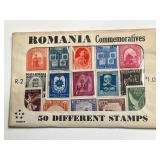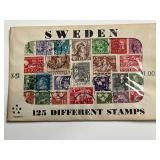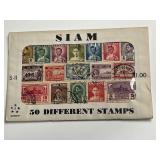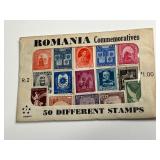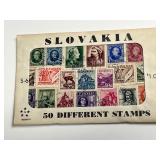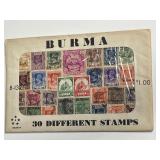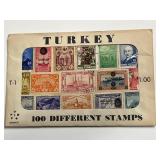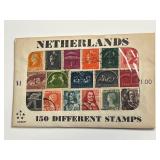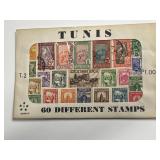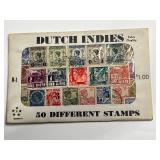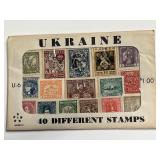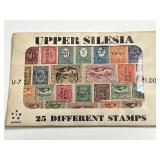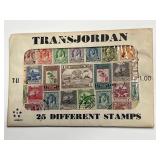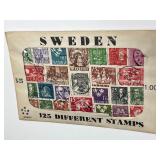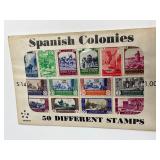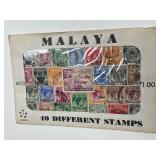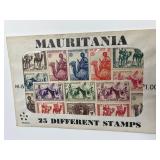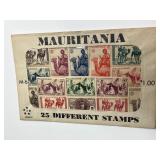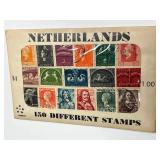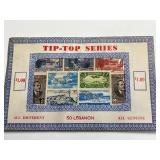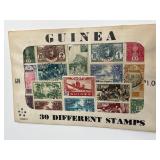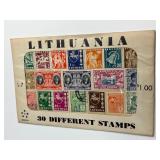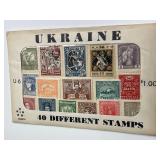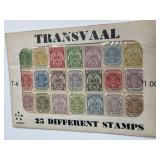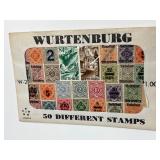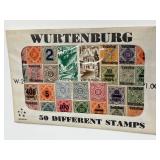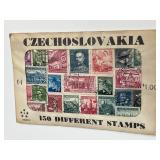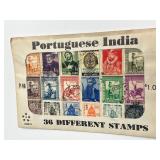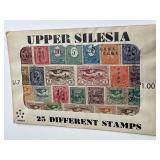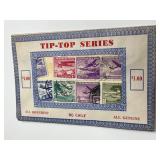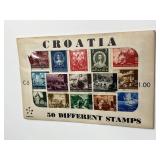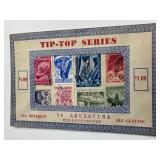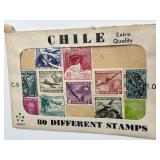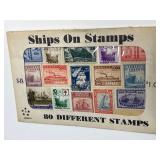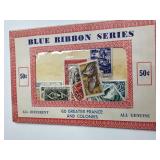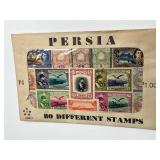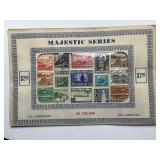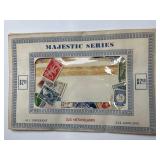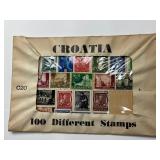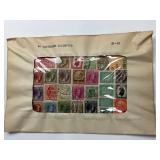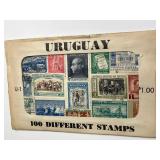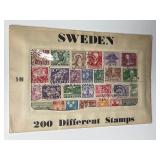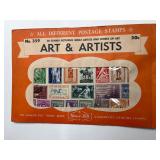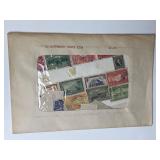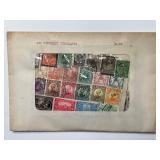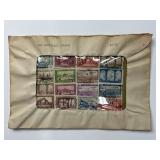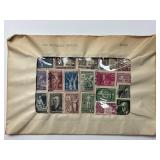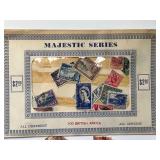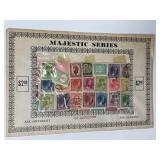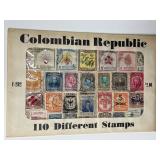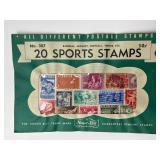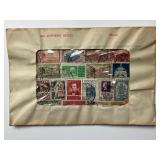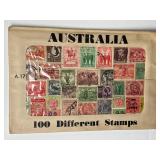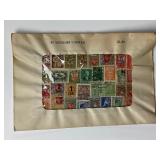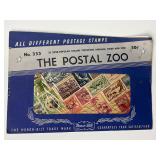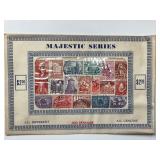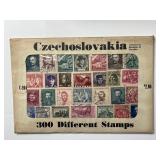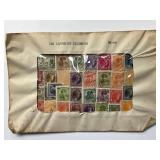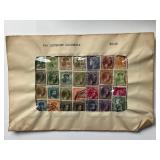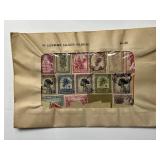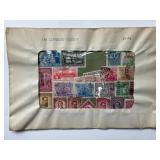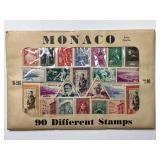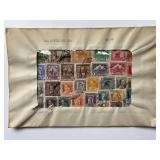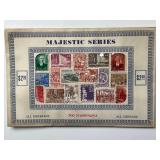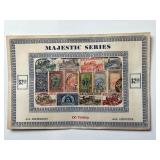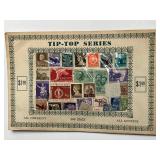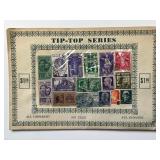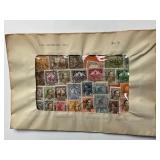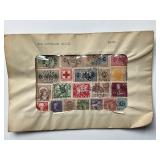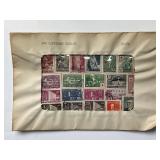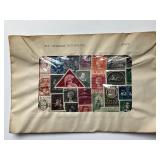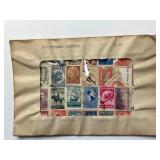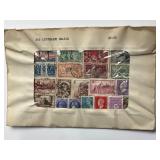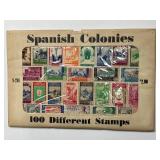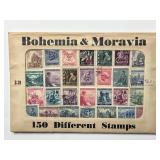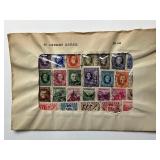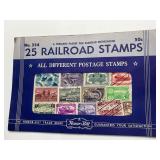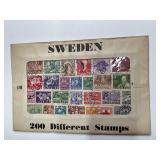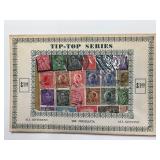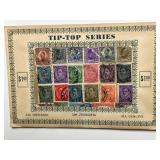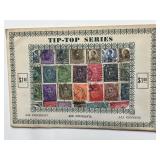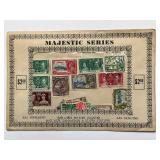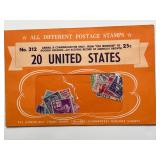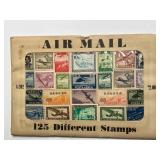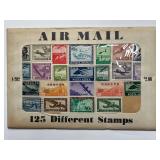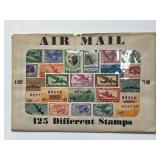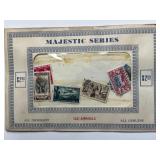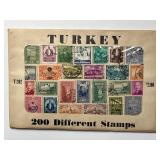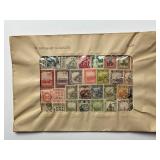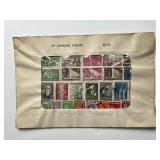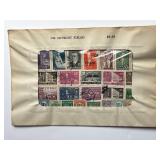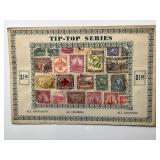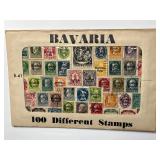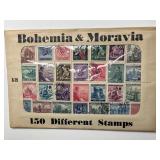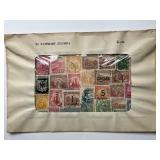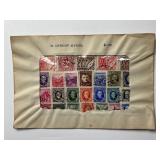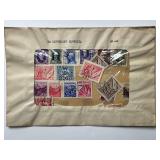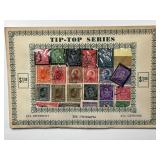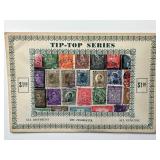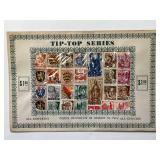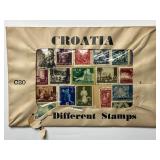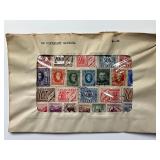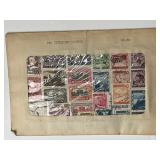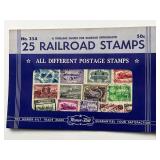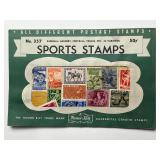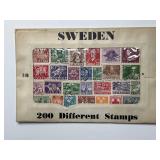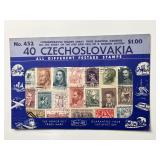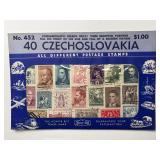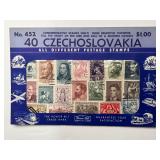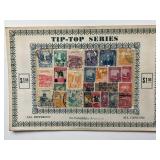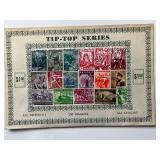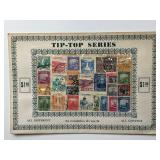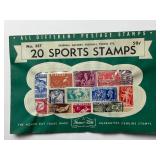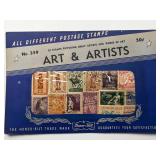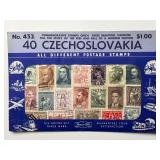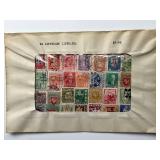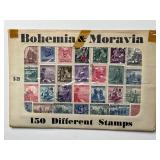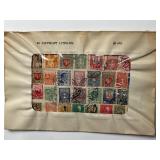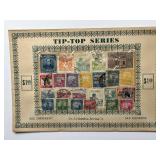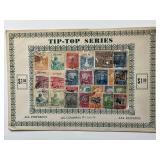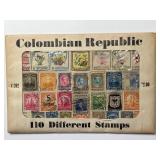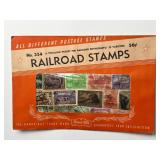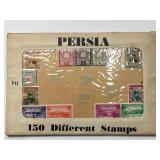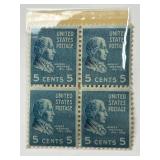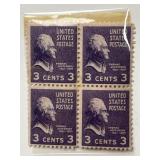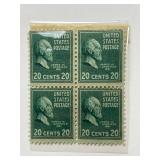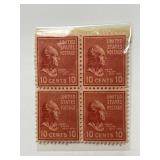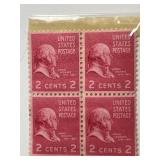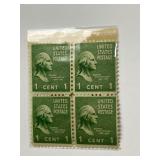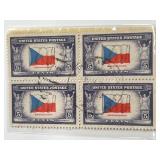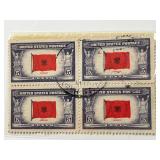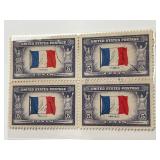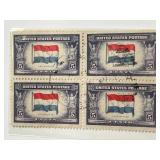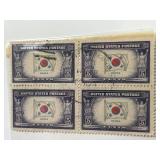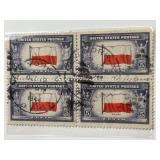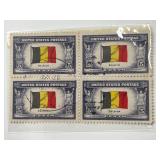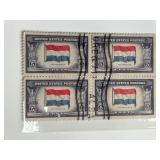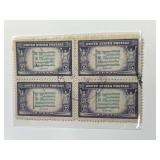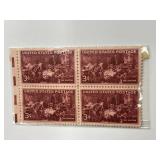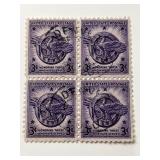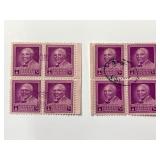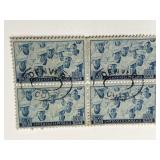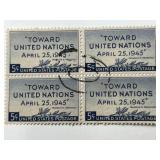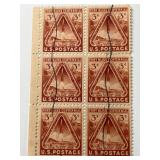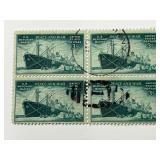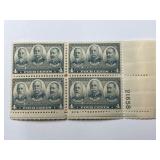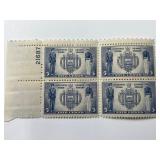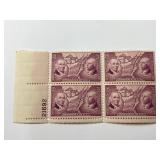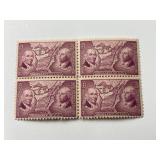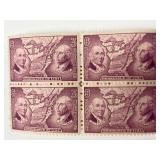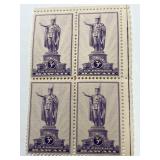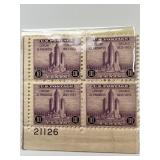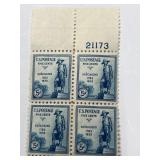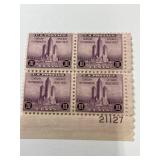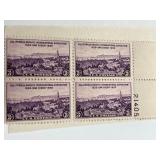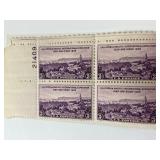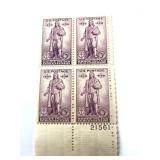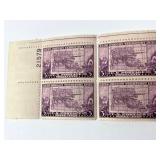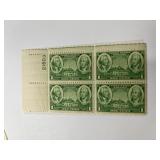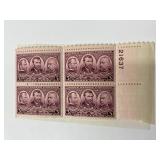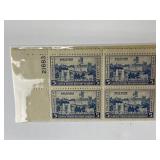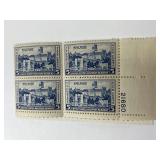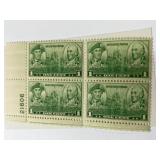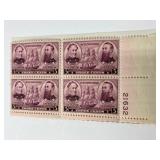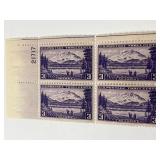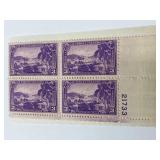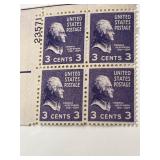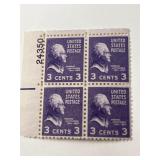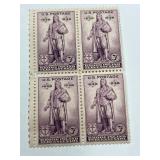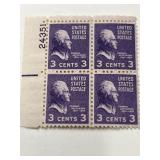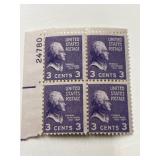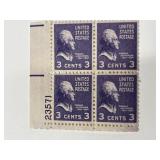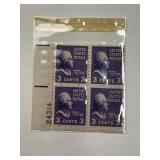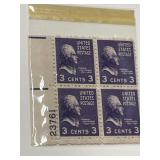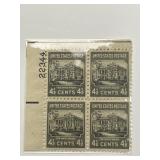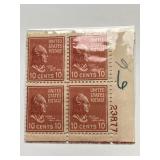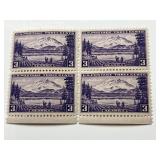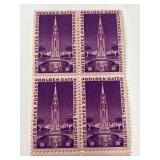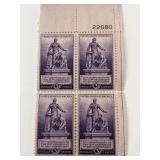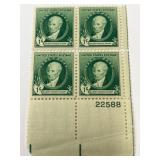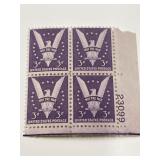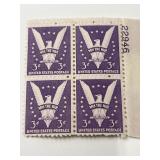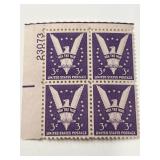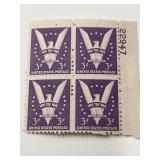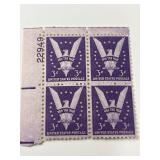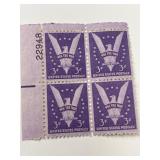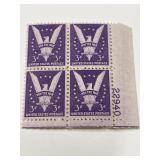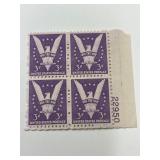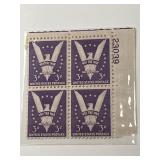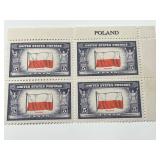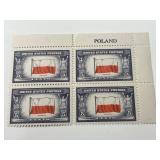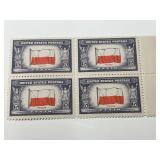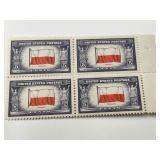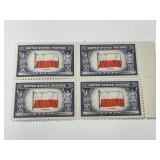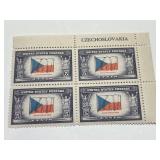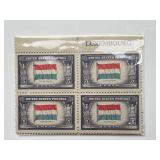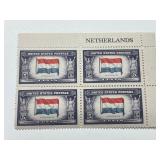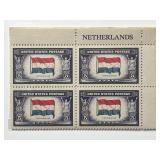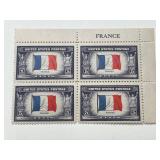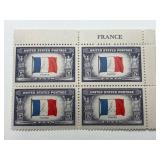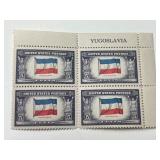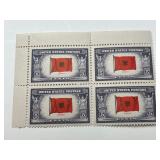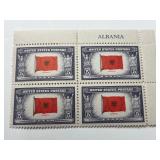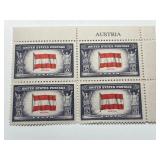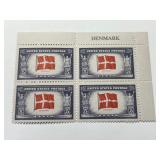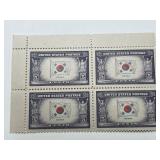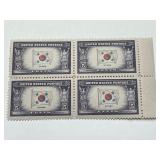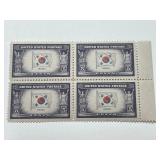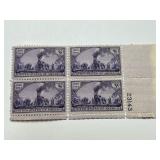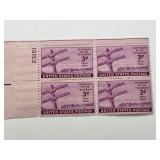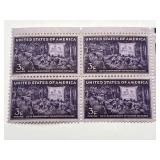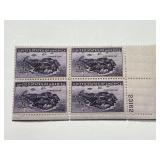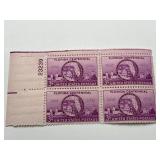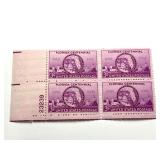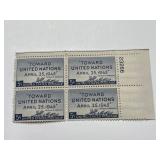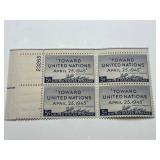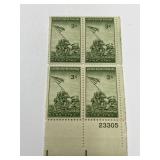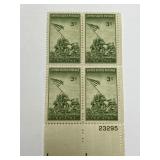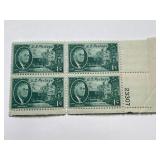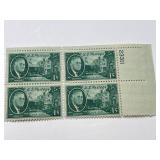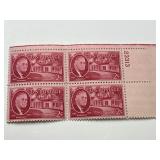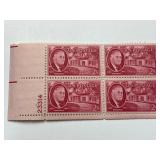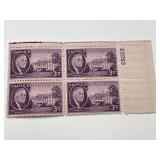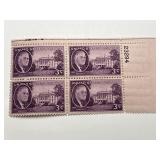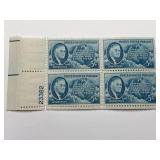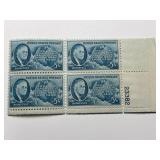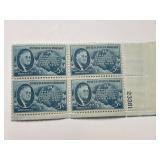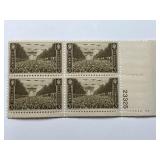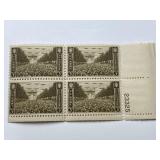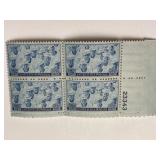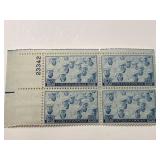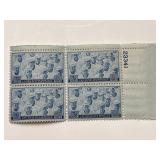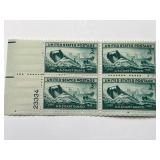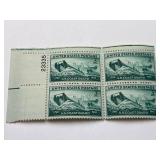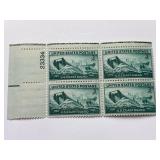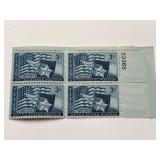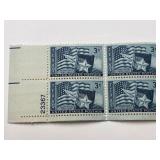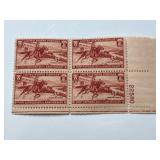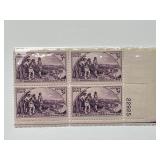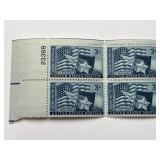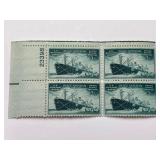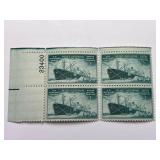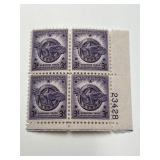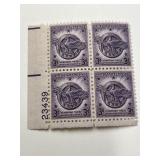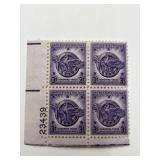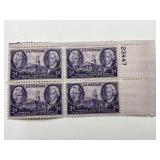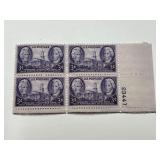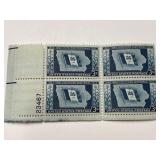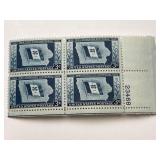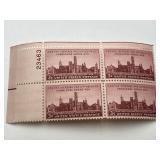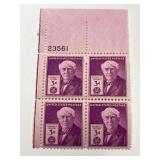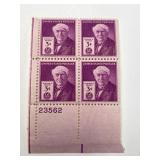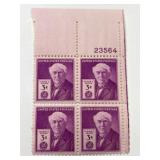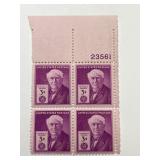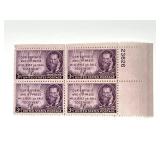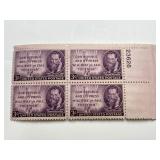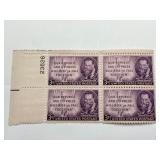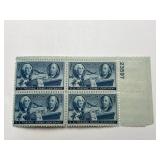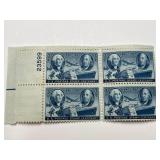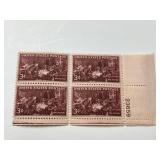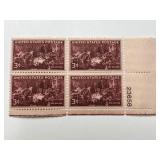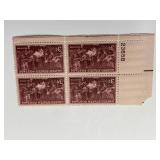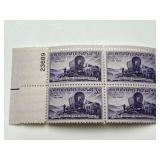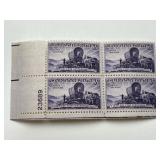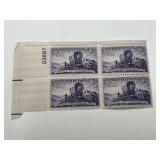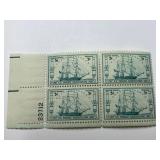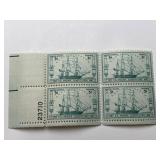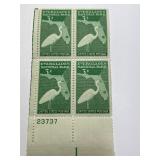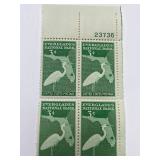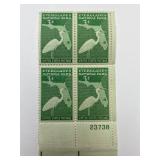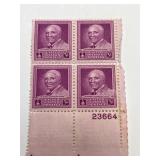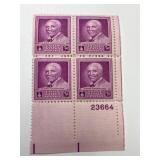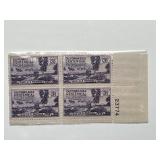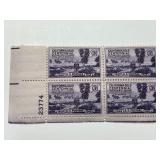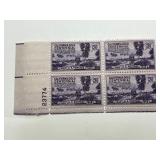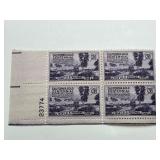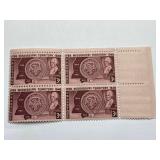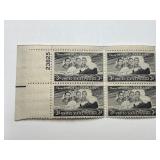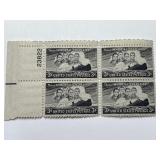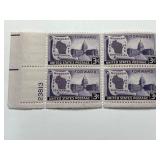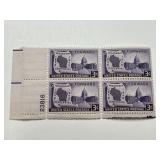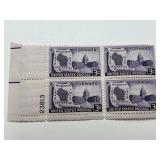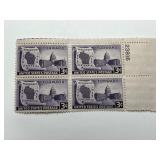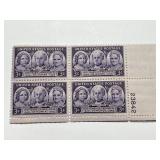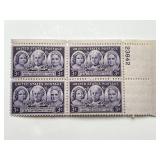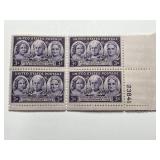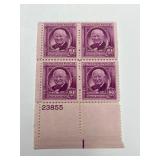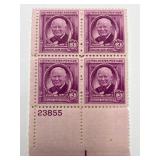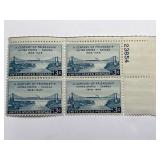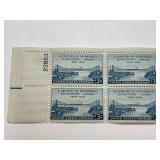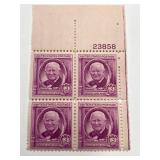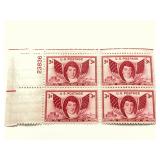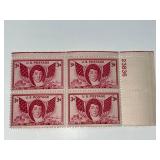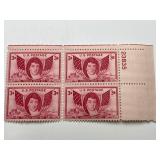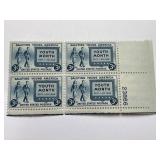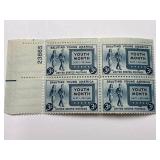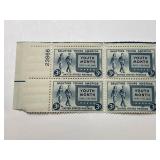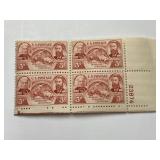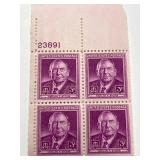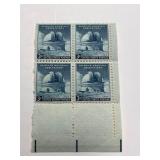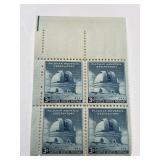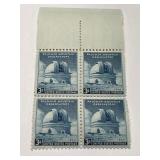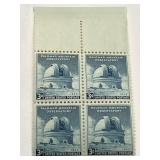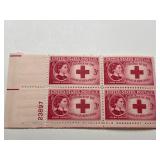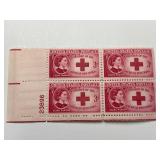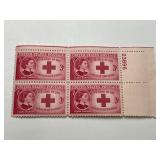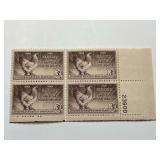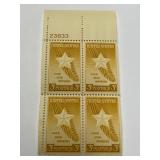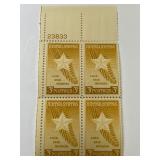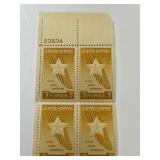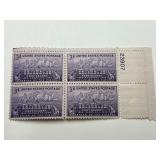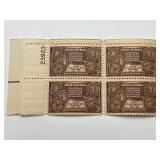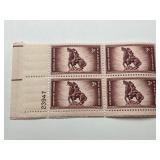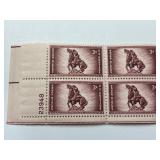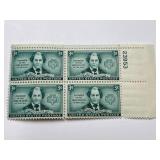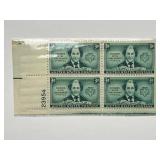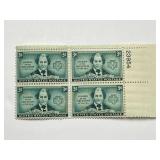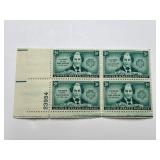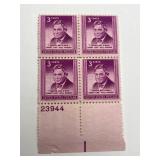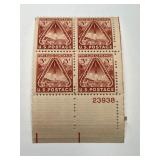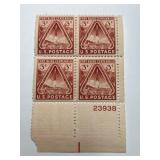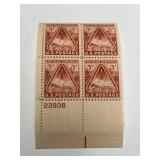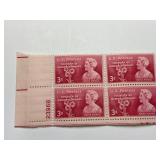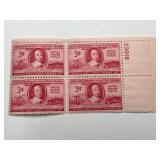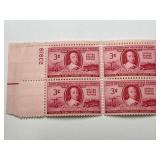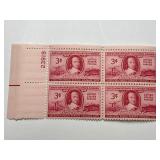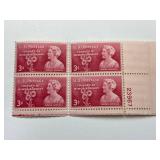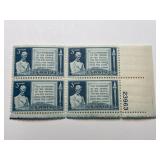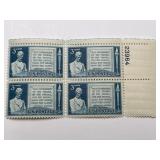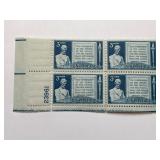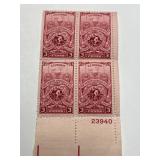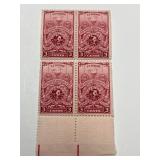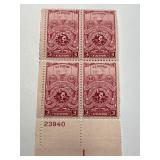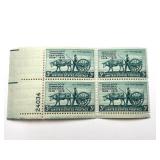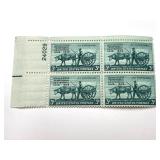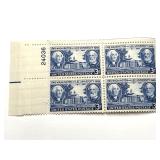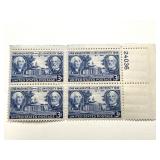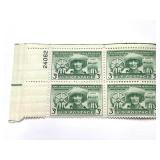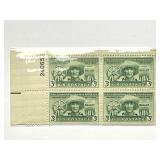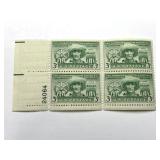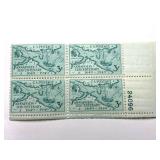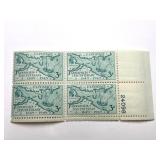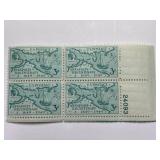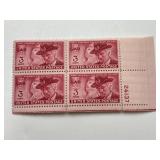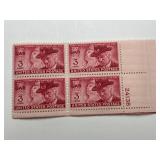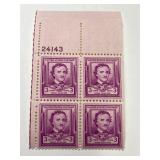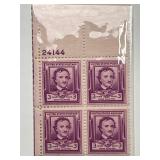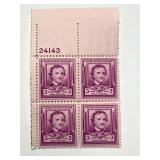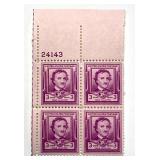View current listings by this company
One-Owner Lifetime Stamp Collection - Auction #1
Listing ID#: 1572403
| Auction Location |
|---|
|
Pelzer, SC 29669 |
| Auction Dates and Times |
|---|
|
Bidding Starts: Sunday Nov 26, 9:00 AM Bidding Ends: Sunday Dec 3, 1:00 PM |
| Auction Type |
|---|
 Online Auction (shipping available)
VIEW ONLINE CATALOG Online Auction (shipping available)
VIEW ONLINE CATALOG |

| Company Information |
|---|
|
Meares Property Advisors Contact: Darron Meares, CAI, MBA Phone: 864-947-2000 Website: www.MPA-SC.com GoToAuction.com ID#: 1709 View company information and listings |
Free Email Notifications
Sign up for the GoToAuction.com email notifications and we will let you know about sales in your area! You may set up alerts by area (zip and radius), keywords, and by company. It is FREE and only takes a few seconds to sign up.
| Listing Terms and Conditions |
|---|
|
See the internet bidding site for full terms and conditions - all items sell to the highest bidder at timed online auction.
|
| Listing Information |
|---|
|
0
AUCTION INFORMATION - DO NOT BID ON THIS LOT
1
Sweden, S-23, 125 Different Stamps, Unopened Envelope
2
Salvador, S-9, 40 Different Stamps, Unopened Envelope
3
Roumania, R-3, 200 Different Stamps, Unopened Envelope
4
SAAR, S-8, 50 Different Stamps, Unopened Envelope
5
Norway, N-5, 100 Different Stamps, Unopened Envelope
6
Transportation, T-10, 80 Different Stamps, Unopened Envelope
7
TOGO, T-7, 35 Different Stamps, Loose In Envelope
8
Senegal, S-19, 25 Different Stamps, Unopened Envelope
9
Serbia, S-16, 30 Different Stamps, Unopened Envelope
10
Scandinavia, S-22, 200 Different Stamps, Unopened Envelope
11
Iraq, I-3, 50 Different Stamps, Unopened Envelope
12
Senegal, S-19, 26 Different Stamps, Unopened Envelope
13
Norway, N-5, 100 Different Stamps, Unopened Envelope
14
Finland, F-8, 105 Different Stamps, Unopened Envelope
15
Tip-Top Series, 25 Different South-West Africa, Unopened Envelope
16
SAAR, S-8, 50 Different Stamps, Unopened Envelope
17
Colombian Republic, C-2, 65 Different Stamps, Unopened Envelope
18
Burma, B-13, 30 Different Stamps, Unopened Envelope
19
Tip-Top Series, 100 Different Bohemia and Moravia Stamps, Unopened Envelope
20
Argentina, A-5, 125 Different Stamps, Unopened Envelope
21
Sweden, S-23, 125 Different Stamps, Unopened Envelope
22
Serbia, S-16, 30 Different Stamps, Unopened Envelope
23
Syria, S-10, 45 Different Stamps, Loose In Envelope
24
Syria, S-10, 45 Different Stamps, Unopened Envelope
25
Ireland, I-6, 40 Different Stamps, Unopened Envelope
26
Portugal, P-0, 110 Different Stamps, Unopened Envelope
27
International Series, 50 Different Religion On Stamps, Unopened Envelope
28
Guadeloupe, G-3, 25 Different Stamps, Unopened Envelope
29
Transcaucasia and Georgia, T-9, 25 Different Stamps, Unopened Envelope
30
Transportation, T-10, 80 Different Stamps, Unopened Envelope
31
Cape Juby, C-8, 25 Different Stamps, Unopened Envelope
32
Tip-Top Series, 40 Different Horses On Stamps, Unopened Envelope
33
Colombian Republic, C-2, 65 Different Stamps, Unopened Envelope
34
Trinidad & Tobago, T-8, 25 Different Stamps, Loose In Envelope
35
Wallis & Futuna Is., W-7, 25 Different Stamps, Unopened Envelope
36
Tip-Top Series, 50 Different Croatia Stamps, Loose In Envelope
37
Straits Settlements, S5, 40 Different Stamps, Unopened Envelope
38
Paraguay, P-7, 50 Different Stamps, Unopened Envelope
39
Siam, S-11, 50 Different Stamps, Unopened Envelope
40
Spanish Morocco, S-2, 40 Different Stamps, Unopened Envelope
41
Persia, P-3, 80 Different Stamps, Unopened Envelope
42
Tip-Top Series, 50 Different Iraq Stamps, Unopened Envelope
43
Transvaal, T-4, 25 Different Stamps, Unopened Envelope
44
San Marino, S-3, 60 Different Stamps, Unopened Envelope
45
French Sudan, F-5, 25 Different Stamps, Unopened Envelope
46
Argentine Commemoratives, A10, 50 Different Stamps, Unopened Envelope
47
Rhodesia, R-11, 25 Different Stamps, Loose In Envelope
48
Senegal, S-19, 26 Different Stamps, Unopened Envelope
49
Slovakia, S-6, 50 Different Stamps, Unopened Envelope
50
Romania Commemoratives, R-2, 50 Different Stamps, Unopened Envelope
51
Sweden, S-23, 125 Different Stamps, Unopened Envelope
52
SIAM, S-11, 50 Different Stamps, Unopened Envelope
53
Romania Commemoratives, R-2, 50 Different Stamps, Unopened Envelope
54
Slovakia, S-6, 50 Different Stamps, Unopened Envelope
55
Burma, B-13, 30 Different Stamps, Unopened Envelope
56
Turkey, T-1, 100 Different Stamps, Unopened Envelope
57
Netherlands, N-1, 150 Different Stamps, Unopened Envelope
58
Tunis, T-2, 60 Different Stamps, Unopened Envelope
59
Dutch Indies, D-1, 50 Different Stamps, Unopened Envelope
60
Ukraine, U-6, 40 Different Stamps, Unopened Envelope
61
Upper Silesia, U-7, 25 Different Stamps, Unopened Envelope
62
Transjordan, T-11, 25 Different Stamps, Unopened Envelope
63
Sweden, S-23, 125 Different Stamps, Unopened Envelope
64
Spanish Colonies, S-14, 50 Different Stamps, Unopened Envelope
65
Malaya, M10, 40 Different Stamps, Unopened Envelope
66
Mauritania, M-6, 25 Different Stamps, Unopened Envelope
67
Mauritania, M-6, 25 Different Stamps, Unopened Envelope
68
Netherlands, N-1, 150 Different Stamps, Unopened Envelope
69
Tip-Top Series, 50 Different Lebanon Stamps, Unopened Envelope
70
Guinea, G10, 30 Different Stamps, Unopened Envelope
71
Lithuania, L-7, 30 Different Stamps, Unopened Envelope
72
Ukraine, U-6, 40 Different Stamps, Unopened Envelope
73
Transvaal, T-4, 25 Different Stamps, Unopened Envelope
74
Wurtenburg, W-2, 50 Different Stamps, Unopened Envelope
75
Wurtenburg, W-2, 50 Different Stamps, Unopened Envelope
76
Czechoslovakia, C-4, 150 Different Stamps, Unopened Envelope
77
Portuguese India, P-10, 36 Different Stamps, Unopened Envelope
78
Upper Silesia, U-7, 25 Different Stamps, Unopened Envelope
79
Tip-Top Series, 80 Different Chile Stamps, Unopened Envelope
80
Croatia, C-5, 50 Different Stamps, Unopened Envelope
81
Tip-Top Series, 50 Different Argentina Commemoratives Stamps, Unopened Envelope
82
Chile, C-9, 80 Different Stamps, Loose In Envelope
83
Ships On Stamps, S-18, 80 Different Stamps, Loose In Envelope
84
Blue Ribbon Series, 60 Different Greater France and Colonies, Loose In Envelope
85
Persia, P-3, 80 Different Stamps, Unopened Envelope
86
Majestic Series, 40 Different Iceland Stamps, Unopened Envelope
87
Majestic Series, 225 Different Netherlands Stamp, Loose In Envelope
88
Croatia, C20, 100 Different Stamps, Unopened Envelope
89
Luxemburg, 50 Different Stamps, Unopened Envelope
90
Uruguay, U-1, 100 Different Stamps, Unopened Envelope
91
Sweden, S90, 200 Different Stamps, Unopened Envelope
92
Art & Artists, 20 Different Stamps Picturing Great Artists and Works of Art
93
Costa Rica, 50 Different Stamps, Loose In Envelope
94
Jugoslavia, 200 Different Stamps, Unopened Envelope
95
Algeria, 100 Different Stamps, Unopened Envelope
96
Finland, 150 Different Stamps, Unopened Envelope
97
Majestic Series, 100 Different British Africa Stamps, Loose In Envelope
98
Majestic Series, 100 Different Luxembourg Stamps, Unopened Envelope
99
Colombian Republic, C202, 110 Different Stamps, Unopened Envelope
100
Sports Stamps, 20 Different Baseball, Archery, Football, Tennis, Etc. Unopened Envelope
101
Peace Stamps, 20 Different Stamps, See Description Below, Unopened Envelope
102
Mexico, 200 Different Stamps, Unopened Envelope
103
Australia, A-17, 100 Different Stamps, Unopened Envelope
104
Lithuania, 50 Different Stamps, Unopened Envelope
105
The Postal Zoo, 35 Different Ever-Popular Stamps Picturing Animals, Birds and Fish
106
Majestic Series, 200 Different Denmark Stamps, Unopened Envelope
107
Czechoslovakia, C-204, 300 Different Stamps, Unopened Envelope
108
Luxemburg, 100 Different Stamps, Unopened Envelope
109
Luxemburg, 100 Different Stamps, Unopened Envelope
110
Belgium Colonies, 50 Different Stamps, Loose In Envelope
111
Uruguay, 150 Different Stamps, Unopened Envelope
112
Monaco, M-203, 90 Different Stamps, Unopened Envelope
113
Iraq, 100 Different Stamps, Unopened Envelope
114
Majestic Series, 300 Scandinavia Different Stamps, Unopened Envelope
115
Majestic Series, 100 Different Tunisia Stamps, Unopened Envelope
116
Tip-Top Series, 200 Different Italy Stamps, Unopened Envelope
117
Tip-Top Series, 200 Different Italy Stamps, Unopened Envelope
118
Iraq, 100 Different Stamps, Unopened Envelope
119
Sweden, 200 Different Stamps, Unopened Envelope
120
Finland, 150 Different Stamps, Unopened Envelope
121
Netherlands, 200 Different Stamps, Unopened Envelope
122
Argentina, 300 Different Stamps, Unopened Envelope
123
France, 300 Different Stamps, Unopened Envelope
124
Spanish Colonies, S-214, 100 Different Stamps, Unopened Envelope
125
Bohemia & Moravia, B-39, 150 Different Stamps, Unopened Envelope
126
Slovakia, 50 Different Stamps, Unopened Envelope
127
Railroad Stamps, 25 Different A Thrilling Packet For Railroad Enthusiasts, Unopened Envelope
128
Sweden, S-90, 200 Different Stamps, Unopened Envelope
129
Tip-Top Series, 100 Jugoslavia Different Stamps, Unopened Envelope
130
Tip-Top Series, 100 Jugoslavia Different Stamps, Unopened Envelope
131
Tip-Top Series, 100 Jugoslavia Different Stamps, Unopened Envelope
132
Majestic Series, 30 British Colonies Different Stamps, Loose In Envelope
133
United States, 20 Different Stamps, Unopened Envelope
134
Air Mail, A202, 125 Different Stamps, Unopened Envelope
135
Air Mail, A202, 125 Different Stamps, Unopened Envelope
136
Air Mail, A202, 125 Different Stamps, Unopened Envelope
137
Majestic Series, 125 Different Airmail Stamps, Unopened Envelope
138
Turkey, T202, 200 Different Stamps, Unopened Envelope
139
Manchukuo, 50 Different Stamps, Unopened Envelope
140
Finland, 150 Different Stamps, Unopened Envelope
141
Finland, 150 Different Stamps, Unopened Envelope
142
Tip-Top Series, 50 Different Colombia Stamps, Unopened Envelope
143
Bavaria, B-41, 100 Different Stamps, Unopened Envelope
144
Bohemia & Moravia, B-39, 150 Different Stamps, Unopened Envelope
145
Colombia, 50 Different Stamps, Unopened Envelope
146
Slovakia, 50 Different Stamps, Unopened Envelope
147
Slovakia, 50 Different Stamps, Unopened Envelope
148
Tip-Top Series, Jugoslavia 100 Different Stamps, Unopened Envelope
149
Tip-Top Series, Jugoslavia 100 Different Stamps, Unopened Envelope
150
Tip-Top Series, 50 Different French Occupation In Germany Stamps, Unopened Envelope
151
Croatia, C20, Different Stamps, Loose In Envelope
152
Slovakia, 50 Different Stamps, Unopened Envelope
153
Austria, 500 Different Stamps, Unopened Envelope
154
Railroad Stamps, 25 Different Stamps, A Thrilling Packet For Railroad Enthusiasts, Unopened Envelope
155
Sports Stamps, 20 Different Baseball, Archery, Football, Tennis, Etc. Unopened Envelope
156
Sweden, S-90, 200 Different Stamps, Unopened Envelope
157
Czechoslovakia, 40 Different Stamps, See Description Below, Unopened Envelope
158
Czechoslovakia, 40 Different Stamps, See Description Below, Unopened Envelope
159
Czechoslovakia, 40 Different Stamps, See Description Below, Unopened Envelope
160
Tip-Top Series, Colombia Airmails, 25 Different Stamps, Unopened Envelope
161
Tip-Top Series, Bulgaria 100 Different Stamps, Unopened Envelope
162
Tip-Top Series, Colombia Airmails, 25 Different Stamps, Unopened Envelope
163
Sports Stamps, 20 Different Baseball, Archery, Football, Tennis, Etc. Unopened Envelope
164
Art & Artist, 20 Different Stamps Picturing Great Artist and Works Of Art, Unopened Envelope
165
Czechoslovakia, 40 Different Stamps, See Description Below, Unopened Envelope
166
Lithuania, 50 Different Stamps, Unopened Envelope
167
Bohemia & Moravia, B-39, 150 Different Stamps, Unopened Envelope
168
Lithuania, 50 Different Stamps, Unopened Envelope
169
Tip-Top Series, Colombia Airmails, 25 Different Stamps, Unopened Envelope
170
Tip-Top Series, Colombia Airmails, 25 Different Stamps, Unopened Envelope
171
Colombian Republic, C-202, 110 Different Stamps, Unopened Envelope
172
Railroad Stamps, 25 Different Stamps, A Thrilling Packet For Railroad Enthusiasts, Unopened Envelope
173
Persia, P-44, 150 Different Stamps, Unopened Envelope
174
# 845 - 1939 5c James Monroe, Bright Blue, Set of Four Stamps
Known affectionately as the “Prexies,” the 1938 Presidential series is a favorite among stamp collectors. James Monroe is the only President who ran unopposed. He’s best remembered for his Monroe Doctrine of 1823, which stated, “The American continents…are not to be considered…for future colonization by any European powers.” This bold statement has become a cornerstone of American foreign policy. 175
# 851 - 1939 3c Thomas Jefferson, Purple Set of Four Stamps
Known affectionately as the “Prexies,” the 1938 Presidential series is a favorite among stamp collectors. Although Thomas Jefferson is best known for writing the Declaration of Independence, he was also instrumental in establishing the Bill of Rights. Upon seeing the first draft of the Constitution, he objected to the lack of a bill of rights and wrote to James Madison, urging one. As a result, Madison introduced the first ten amendments to the Constitution – The Bill of Rights. 176
# 825 - 1938 20c Garfield, Green, Set of Four Stamps
Known affectionately as the "Prexies" the 1938 Presidential series is a favorite among stamp collectors. The 20¢ denomination pictures James Garfield. Before becoming President, James Garfield was a professor of ancient languages, a college president, a Civil War general, and a U.S. congressman. Often, he would entertain friends and visitors to the White House by writing Greek with one hand while at the same time writing Latin with the other hand. 177
# 815 - 1938 10c John Tyler, Brown Red, Set of Four Stamps
Known affectionately as the "Prexies" the 1938 Presidential series is a favorite among stamp collectors. 178
# 806 - 1938 2c John Adams, Rose Carmine Set of Four Stamps
Known affectionately as the "Prexies" the 1938 Presidential series is a favorite among stamp collectors. he series was issued in response to public clamoring for a new Regular Issue series. The series that was current at the time had been in use for more than a decade. President Franklin D. Roosevelt agreed, and a contest was staged. The public was asked to submit original designs for a new series picturing all deceased U.S. Presidents. Over 1,100 sketches were submitted, many from veteran stamp collectors. Elaine Rawlinson, who had little knowledge of stamps, won the contest and collected the $500 prize. Rawlinson was the first stamp designer since the Bureau of Engraving and Printing began producing U.S. stamps who was not a government employee. 179
# 804 - 1938 1c George Washington, Green Set of Four Stamps
Known affectionately as the "Prexies" the 1938 Presidential series is a favorite among stamp collectors. The series was issued in response to public clamoring for a new Regular Issue series. The series that was current at the time had been in use for more than a decade. President Franklin D. Roosevelt agreed, and a contest was staged. The public was asked to submit original designs for a new series picturing all deceased U.S. Presidents.Over 1,100 sketches were submitted, many from veteran stamp collectors. Elaine Rawlinson, who had little knowledge of stamps, won the contest and collected the $500 prize. Rawlinson was the first stamp designer since the Bureau of Engraving and Printing began producing U.S. stamps who was not a government employee. 180
# 1019 - 1953 3c Washington Territory Centennial, Set of 10 Stamps,
U.S. #1019 commemorates the 100th anniversary of the establishment of the Washington Territory. The stamp pictures early pioneers, the state flower – the rhododendron – and several products Washington is known for. 181
# 910 - 1943 Overrun Countries: 5c Flag of Czechoslovakia Set of Four Stamps
U.S. #910 is part of the Overrun Countries Series, which honors each of the nations invaded by Axis powers during World War II. It pictures the flag of Czechoslovakia, which features red and white bars from the ancient coat of arms of Bohemia. The blue triangle was added in 1920 to differentiate it from the flag of Poland. 182
# 918 - 1943 Overrun Countries: 5c Flag of Albania, Set of Four Stamps
U.S. #918 is part of the Overrun Countries Series, which honors each of the nations invaded by Axis powers during World War II. It pictures the flag of Albania, which features a red background with a black two-headed eagle at its center. It is based on the seal of Gjergj Skanderberg, who led the 15th century revolt against the Ottoman Empire, bringing some regions of Albania a period of independence. The flag was officially adopted in 1922. 183
# 915 - 1943 Overrun Countries: 5c Flag of France Set of Four Stamps
U.S. #915 is part of the Overrun Countries Series, which honors each of the nations invaded by Axis powers during World War II. It pictures the flag of France, which features red, white, and blue vertical bars. Red and blue are the traditional colors of Paris, and white, the “ancient French colour,” was added to make it a tricolor. The flag was adopted in 1794. 184
# 913 - 1943 Overrun Countries: 5c Flag of Netherlands Set of Four Stamps
U.S. #913 is part of the Overrun Countries Series, which honors each of the nations invaded by Axis powers during World War II. It pictures the flag of the Netherlands, which features red, white, and blue stripes. The flag was first introduced in 1572, making it one of the first tricolor flags, and the oldest still in use. 185
# 921 - 1944 Overrun Countries: 5c Flag of Korea Set of Four Stamps
U.S. #921 is part of the Overrun Countries Series, which honors each of the nations invaded by Axis powers during World War II. It pictures the flag of Korea, which features the Chinese Yin and Yang symbol and four symbols representing the Taoist philosophical ideas of the universe – harmony, symmetry, balance, and circulation. 186
# 909 - 1943 Overrun Countries: 5c Flag of Poland Set of Four Stamps
U.S. #909 is part of the Overrun Countries Series, which honors each of the nations invaded by Axis powers during World War II. It pictures the flag of Poland, which features red and white bars, the national colors since 1831. 187
# 914 - 1943 Overrun Countries: 5c Flag of Belgium Set of Four Stamps
U.S. #914 is part of the Overrun Countries Series, which honors each of the nations invaded by Axis powers during World War II. It pictures the flag of Belgium, featuring black, yellow, and red vertical bands. The flag as it appears on the stamp, was adopted in 1831. 188
# 913 - 1943 Overrun Countries: 5c Flag of Netherlands Set of Four Stamps
U.S. #913 is part of the Overrun Countries Series, which honors each of the nations invaded by Axis powers during World War II. It pictures the flag of the Netherlands, which features red, white, and blue stripes. The flag was first introduced in 1572, making it one of the first tricolor flags, and the oldest still in use. 189
# 916 - 1943 Overrun Countries: 5c Flag of Greece, Set of Four Stamps
U.S. #916 is part of the Overrun Countries Series, which honors each of the nations invaded by Axis powers during World War II. It pictures the flag of Greece, which features blue and white horizontal bars with a white cross on a blue field as the canton. The cross is a symbol of the Greek Orthodoxy, which is the religion of the people of Greece. Several theories exist explaining the number of stripes. For instance, one states that the nine stripes represent the letters of the Greek word for freedom. The flag was officially adopted in 1822. 190
# 949 - 1947 3c The Doctor, Set of Four Stamps
Honoring the doctors of America, U.S. #949 pictures a reproduction of Sir Luke Fildes’ painting, “The Doctor.” 191
# 940 - 1946 3c US Armed Forces: Veterans of World War II, Four Stamps
U.S. #940 honors all those who served in World War II and pictures the Honorable Discharge Emblem. The five stars surrounding the emblem honor those who died in each of the five services – Army, Navy, Coast Guard, Marines, and Merchant Marines. 192
# 953 - 1948 3c George Washington Carver Four Stamps
U.S. #953 honors Dr. George Washington Carver and features the same format as the 1940 Famous American Scientists stamps. 193
# 935 - 1945 3c US Armed Forces: Navy Four Stamps
U.S. #935 was issued to commemorate the important role of the U.S. Navy during World War II. The stamp pictures a group of sailors in their summer uniforms. 194
# 928 - 1945 5c UN Peace Conference "Toward United Nations April 25, 1945" Four Stamps
When 46 nations gathered in San Francisco on April 25, 1945, they were exhausted from the extended war, disheartened by the inhumanity they had seen, and determined to prevent future generations from experiencing what they had seen firsthand. Their ultimate goal was to form an international organization that would have the power to maintain security and foster prosperity and give human rights an international legal status. 195
# 976 - 1948 3c Fort Bliss Centennial, Six Stamps
A theme of old and new is featured on U.S. #976 – the centennial issue commemorating Fort Bliss, near El Paso, Texas. The design of the stamp features a 19th century Spanish-style mission to commemorate its role as a key defense for the region. It also pictures a rocket launch, signifying the fort’s history in the development of the American rocket program. 196
# 939 - 1946 3c US Armed Forces: Merchant Marine, Peace and War Plate Block of Four Stamps
U.S. #939 commemorates the achievements of the Merchant Marines during World War II. The stamp pictures a liberty ship unloading cargo. On March 15, 1938, the Merchant Marine Cadet Corps was established. Merchant Marines transport cargo and passengers in peacetime and are called upon in times of war to deliver troops and supplies wherever needed. 197
# 793 - 1937 4c Army and Navy: Sampson, Dewey and Schley Plate Block of Four Stamps
#793 featured three naval heroes of the Spanish-American War“ Admirals William Sampson, George Dewey, and Winfield Schley. Both officers were at the end of long and distinguished careers when they worked together to completely destroy the Spanish fleet in the Battle of Santiago de Cuba. All six Spanish ships were sunk or captured, while the American force lost only one sailor. 198
# 794 - 1937 5c Army and Navy: Seal of U.S. Naval Academy Plate Block of Four Stamps
Decades after Americas first ships took to the oceans to defend its interests, the US Naval Academy was opened on October 10, 1845. 199
# 795 - 1937 3c Northwest Ordinance, Cutler & Putnam Plate Block of Four Stamps
The Northwest Ordinance Leads to Ohio’s Statehood. On July 13, 1787, the United States Congress passed the Ordinance of 1787, more popularly known as the Northwest Ordinance. Historians consider this law one of the most important ever passed in U.S. history, as it provided the model for the organized growth of the U.S. The ordinance established government for the area north of the Ohio River and west of Pennsylvania, and illustrated the steps a territory would need to take to achieve statehood. 200
# 795 - 1937 3c Northwest Ordinance, Cutler & Putnam Plate Block of Four Stamps
The Northwest Ordinance Leads to Ohio’s Statehood. On July 13, 1787, the United States Congress passed the Ordinance of 1787, more popularly known as the Northwest Ordinance. Historians consider this law one of the most important ever passed in U.S. history, as it provided the model for the organized growth of the U.S. The ordinance established government for the area north of the Ohio River and west of Pennsylvania, and illustrated the steps a territory would need to take to achieve statehood. 201
# 795 - 1937 3c Northwest Ordinance, Cutler & Putnam Plate Block of Four Stamps
The Northwest Ordinance Leads to Ohio’s Statehood. On July 13, 1787, the United States Congress passed the Ordinance of 1787, more popularly known as the Northwest Ordinance. Historians consider this law one of the most important ever passed in U.S. history, as it provided the model for the organized growth of the U.S. The ordinance established government for the area north of the Ohio River and west of Pennsylvania, and illustrated the steps a territory would need to take to achieve statehood. 202
#799 1937 3¢ Hawaii Territorial Series Plate Block of Four Stamps
Standing in Honolulu, Hawaii, this statue honors the King who first united the Hawaiian Islands. 203
# 729 - 1933 3c Federal Building at Chicago Plate Block of Four Stamps
The 1933 World€™s Fair opened in Chicago, Illinois, on May 27, 1933. By the late 1920s, the city of Chicago was looking toward 1933 as its 100th anniversary. A nonprofit corporation, A Century of Progress, was founded in 1928 to plan and host the upcoming Worlds Fair to be held there. 204
# 734 - 1933 5c General Tadeusz Kosciuszko Plate Block of Four Stamps
Honors General Tadeusz Kosciusko on the 150th anniversary of his naturalization as an American citizen, bestowed upon him as a reward for his services during the American Revolution. 205
# 729 - 1933 3c Federal Building at Chicago Plate Block of Four Stamps
The 1933 Worlds Fair opened in Chicago, Illinois, on May 27, 1933. By the late 1920s, the city of Chicago was looking toward 1933 as it's 100th anniversary. A nonprofit corporation, A Century of Progress, was founded in 1928 to plan and host the upcoming Worlds Fair to be held there. 206
# 773 - 1935 3c California Pacific Exposition Plate Block of Four Stamps
U.S. #773 was issued in conjunction with the California Pacific Exposition. Held in San Diego in 1935, the Exposition celebrated the 400th anniversary of Coronado's discovery of the Pacific Southwest. Designed to help a California economy suffering from the Great Depression, the Exposition included exhibits featuring science, industry, and the arts. Odder attractions were also present, such as a recreation of an 1849 mining town called "Gold Gulch", and the Zoro Garden Nudist Colony. 207
# 773 - 1935 3c California Pacific Exposition Plate Block of Four Stamps
U.S. #773 was issued in conjunction with the California Pacific Exposition. Held in San Diego in 1935, the Exposition celebrated the 400th anniversary of Coronado's discovery of the Pacific Southwest. Designed to help a California economy suffering from the Great Depression, the Exposition included exhibits featuring science, industry, and the arts. Odder attractions were also present, such as a recreation of an 1849 mining town called "Gold Gulch", and the Zoro Garden Nudist Colony. 208
# 777 - 1936 3c Rhode Island Tercentenary, Roger Williams Plate Block of Four Stamps
The smallest state in the Union, Rhode Island is also the most densely populated. In 1776, Rhode Island became the first colony to declare independence from Great Britain. In 1790, it became the last of the 13 original states to ratify the Constitution of the United States. 209
# 783 - 1936 3c Oregon Territory Centennial Plate Block of Four Stamps
On August 14, 1848, the Oregon Territory was established. American ships reached the Oregon coast in 1788. In 1792, Captain Robert Gray, an American, was the first European to explore the Columbia River. Gray named the river after his ship. The Lewis and Clark Expedition traveled by land to the mouth of the Columbia River in 1805. These explorations gave the United States solid grounds for claiming the Oregon region. In the early 1800s, the Oregon region was defined as stretching from Alaska, which was controlled by Russia, to California, which was ruled by Spain. Oregon's eastern boundary extended all the way to the Rocky Mountains. Russia, Spain, Great Britain, and the United States all made claims on this area. 210
# 785 - 1936 1c Army and Navy: Washington and Greene, Mt Vernon Plate Block of Four Stamps
First in a five-stamp series honoring Army heroes. Pictured are Revolutionary War Generals George Washington and Nathanael Greene, plus Mount Vernon. 211
# 787 - 1937 3c Army and Navy: Sherman, Grant and Sheridan Plate Block of Four Stamps
William T. Sherman, Ulysses S. Grant, and Philip Sheridan each achieved fame as Union generals during the Civil War. After retiring from the Army, General Grant went on to become the 18th President of the United States. 212
# 789 - 1937 5c Army and Navy: West Point Military Academy Plate Block of Four Stamps
U.S. #789 was issued as part of a set of stamps honoring U.S. Army and Navy heroes. It is one of two stamps (along with the Naval Academy in Annapolis, Maryland) not featuring a military commander in the group. Founded by an act of Congress in 1802, the United States Military Academy is located in West Point, NY, on the bank of the Hudson River. 213
# 789 - 1937 5c Army and Navy: West Point Military Academy Plate Block of Four Stamps
U.S. #789 was issued as part of a set of stamps honoring U.S. Army and Navy heroes. It is one of two stamps (along with the Naval Academy in Annapolis, Maryland) not featuring a military commander in the group. Founded by an act of Congress in 1802, the United States Military Academy is located in West Point, NY, on the bank of the Hudson River. 214
# 790 - 1936 1c Army and Navy: John Paul Jones and John Barry Plate Block of Four Stamps
The U.S. Navy traces its origins to the Continental Navy, established on October 13, 1775. The Continental Congress authorized the procurement and dispatch of two armed vessels to cruise in search of ships supplying munitions to the British Army in America. The Continental Navy numbered approximately 50 ships during the course of the Revolutionary War. John Paul Jones was among the original slate of Continental Navy officers. As First Lieutenant on the flagship Alfred, Jones was the first to unfurl the Grand Union flag on a Continental warship. On February 14, 1778, Jones and French Admiral La Motte Piquet exchanged gun salutes, marking the first time that the American flag was officially recognized by a foreign government. The Continental Navy was suspended at the end of the Revolutionary War, and reestablished in 1789. Jones is widely considered the father of the U.S. Navy for his spirited response, “I have not yet begun to fight,” as he faced almost certain defeat during a sea battle 215
# 792 - 1937 3c Army and Navy: Farragut and Porter Plate Block of Four Stamps
Not only were David Farragut and David Porter both Civil War Naval commanders, they were adopted brothers. Both served during the Civil War, with Farragut earning praise as the hero of Mobile Bay. 216
# 800 - 1937 3c Alaska US Mount McKinley Plate Block of Four Stamps
On October 18, 1937, the US Post Office issued the first stamp in a new series honoring the overseas territories of the United States. 217
# 802 - 1937 3c Virgin Islands Charlotte Amalie Plate Block of Four Stamps
U.S. #802 shows Charlotte Amalie Harbor in the U.S. Virgin Islands. Issued five years after all residents of the territory were granted U.S. citizenship, this stamp pictures the city of Charlotte Amalie. The port city is on the island of St. Thomas, and both the harbor and city are displayed on the stamp. 218
BK101 - 1938 73c Thomas Jefferson Plate Block of Four Stamps
Own a scarce 1939 3¢ Jefferson booklet. This booklet was issued with two variations – one with a 3-milimeter vertical gutter and one with a 2-1/2-milimeter gutter. BK101 is the rarer booklet with the 3-milimeter vertical gutter and the buff colored cover, as opposed to pink. This is your chance to own a scarce complete booklet (4 panes of 6 stamps) from one of the most popular series of the early 20th century – the Prexies. 219
BK101 - 1938 73c Thomas Jefferson Plate Block of Four Stamps
Own a scarce 1939 3¢ Jefferson booklet. This booklet was issued with two variations – one with a 3-milimeter vertical gutter and one with a 2-1/2-milimeter gutter. BK101 is the rarer booklet with the 3-milimeter vertical gutter and the buff colored cover, as opposed to pink. This is your chance to own a scarce complete booklet (4 panes of 6 stamps) from one of the most popular series of the early 20th century – the Prexies. 220
# 777 - 1936 3c Rhode Island Tercentenary, Roger Williams Plate Block of Four Stamps
The smallest state in the Union, Rhode Island is also the most densely populated. In 1776, Rhode Island became the first colony to declare independence from Great Britain. In 1790, it became the last of the 13 original states to ratify the Constitution of the United States. 221
BK101 - 1938 73c Thomas Jefferson Plate Block of Four Stamps
Own a scarce 1939 3¢ Jefferson booklet. This booklet was issued with two variations – one with a 3-milimeter vertical gutter and one with a 2-1/2-milimeter gutter. BK101 is the rarer booklet with the 3-milimeter vertical gutter and the buff colored cover, as opposed to pink. This is your chance to own a scarce complete booklet (4 panes of 6 stamps) from one of the most popular series of the early 20th century – the Prexies. 222
BK101 - 1938 73c Thomas Jefferson Plate Block of Four Stamps
Own a scarce 1939 3¢ Jefferson booklet. This booklet was issued with two variations – one with a 3-milimeter vertical gutter and one with a 2-1/2-milimeter gutter. BK101 is the rarer booklet with the 3-milimeter vertical gutter and the buff colored cover, as opposed to pink. This is your chance to own a scarce complete booklet (4 panes of 6 stamps) from one of the most popular series of the early 20th century – the Prexies. 223
BK101 - 1938 73c Thomas Jefferson Plate Block of Four Stamps
Own a scarce 1939 3¢ Jefferson booklet. This booklet was issued with two variations – one with a 3-milimeter vertical gutter and one with a 2-1/2-milimeter gutter. BK101 is the rarer booklet with the 3-milimeter vertical gutter and the buff colored cover, as opposed to pink. This is your chance to own a scarce complete booklet (4 panes of 6 stamps) from one of the most popular series of the early 20th century – the Prexies. 224
BK101 - 1938 73c Thomas Jefferson Plate Block of Four Stamps
Own a scarce 1939 3¢ Jefferson booklet. This booklet was issued with two variations – one with a 3-milimeter vertical gutter and one with a 2-1/2-milimeter gutter. BK101 is the rarer booklet with the 3-milimeter vertical gutter and the buff colored cover, as opposed to pink. This is your chance to own a scarce complete booklet (4 panes of 6 stamps) from one of the most popular series of the early 20th century – the Prexies. 225
BK101 - 1938 73c Thomas Jefferson Plate Block of Four Stamps
Own a scarce 1939 3¢ Jefferson booklet. This booklet was issued with two variations – one with a 3-milimeter vertical gutter and one with a 2-1/2-milimeter gutter. BK101 is the rarer booklet with the 3-milimeter vertical gutter and the buff colored cover, as opposed to pink. This is your chance to own a scarce complete booklet (4 panes of 6 stamps) from one of the most popular series of the early 20th century – the Prexies. 226
#844 - 1939 4 1/2c White House, Dark Gray Plate Block of Four Stamps
This 132-room mansion is the official residence of the U.S. President. President Monroe originally named it the Executive Mansion, in 1818. Later, it was called the President’s Mansion, the President’s Home, and the President’s Palace. In 1902, President Theodore Roosevelt gave the current title: The White House. 227
#815 - 1938 10c John Tyler, Brown Red Plate Block of Four Stamps
Known affectionately as the "Prexies" the 1938 Presidential series is a favorite among stamp collectors. 228
#800 - 1937 3c Alaska Purple Postage Stamp Plate Block of Four Stamps
On October 18, 1937, the US Post Office issued the first stamp in a new series honoring the overseas territories of the United States. 229
# 852 - 1939 3c Golden Gate International Exposition Plate Block of Four Stamps
The Post Office Department issued U.S. #852 in conjunction with the Golden Gate International Exposition – and on the same day it opened. The Exposition was a World’s Fair, celebrating two new bridges – the Golden Gate Bridge (opened in 1937) and the San Francisco-Oakland Bay Bridge (opened in 1935). The stamp shows the “Tower of the Sun,” which symbolized the “Pageant of the Pacific” theme. The tower rose 400 feet high and was surrounded by four statues representing Science, Agriculture, Industry, and Art. 230
# 902 - 1940 3c Emancipation Memorial, 13th Amendment Plate Block of Four Stamps
U.S. #902 was issued to commemorate the 75th anniversary of the 13th Amendment, which declared that “neither slavery nor involuntary servitude” would be allowed in the United States. 231
#884 - 1940 Famous Americans: 1c Gilbert Charles Stuart Plate Block of Four Stamps
Stuart was the third child of Gilbert Stuart, who worked in America’s first colonial snuff mill. When he was six, Stuart’s family moved to Newport, Rhode Island. It was there that he first began to show an interest and talent for painting. In 1770, Stuart met Scottish artist Cosmo Alexander, who served as his first art tutor. The following year Stuart traveled to Scotland with Alexander but returned to America in 1773 following his tutor’s death. 232
#905 1942 3c Win The War Plate Block of Four Stamps
U.S. #905, the "Win the War" stamp, was issued on the anniversary of American independence in order to bolster American support of the war effort. This stamp was honored in the 100 Greatest U.S. Stamps book. 233
#905 1942 3c Stamps, Win The War Plate Block of Four Stamps Stamps
U.S. #905, the "Win the War" stamp, was issued on the anniversary of American independence in order to bolster American support of the war effort. This stamp was honored in the 100 Greatest U.S. Stamps book. 234
#905 1942 3c Stamps, Win The War Plate Block of Four Stamps
U.S. #905, the "Win the War" stamp, was issued on the anniversary of American independence in order to bolster American support of the war effort. This stamp was honored in the 100 Greatest U.S. Stamps book. 235
#905 1942 3c Stamps, Win The War Plate Block of Four Stamps
U.S. #905, the "Win the War" stamp, was issued on the anniversary of American independence in order to bolster American support of the war effort. This stamp was honored in the 100 Greatest U.S. Stamps book. 236
#905 1942 3c Stamps, Win The War Plate Block of Four Stamps Stamps
U.S. #905, the "Win the War" stamp, was issued on the anniversary of American independence in order to bolster American support of the war effort. This stamp was honored in the 100 Greatest U.S. Stamps book. 237
#905 1942 3c Stamps, Win The War Plate Block of Four Stamps Stamps
U.S. #905, the "Win the War" stamp, was issued on the anniversary of American independence in order to bolster American support of the war effort. This stamp was honored in the 100 Greatest U.S. Stamps book. 238
#905 1942 3c Stamps, Win The War Plate Block of Four Stamps
U.S. #905, the "Win the War" stamp, was issued on the anniversary of American independence in order to bolster American support of the war effort. This stamp was honored in the 100 Greatest U.S. Stamps book. 239
#905 1942 3c Stamps, Win The War Plate Block of Four Stamps
U.S. #905, the "Win the War" stamp, was issued on the anniversary of American independence in order to bolster American support of the war effort. This stamp was honored in the 100 Greatest U.S. Stamps book. 240
#905 1942 3c Stamps, Win The War Plate Block of Four Stamps
U.S. #905, the "Win the War" stamp, was issued on the anniversary of American independence in order to bolster American support of the war effort. This stamp was honored in the 100 Greatest U.S. Stamps book. 241
# 909 - 1943 Overrun Countries: 5c Flag of Poland Plate Block of Four Stamps
U.S. #909 is part of the Overrun Countries Series, which honors each of the nations invaded by Axis powers during World War II. It pictures the flag of Poland, which features red and white bars, the national colors since 1831. 242
# 909 - 1943 Overrun Countries: 5c Flag of Poland Plate Block of Four Stamps
U.S. #909 is part of the Overrun Countries Series, which honors each of the nations invaded by Axis powers during World War II. It pictures the flag of Poland, which features red and white bars, the national colors since 1831. 243
# 909 - 1943 Overrun Countries: 5c Flag of Poland Plate Block of Four Stamps
U.S. #909 is part of the Overrun Countries Series, which honors each of the nations invaded by Axis powers during World War II. It pictures the flag of Poland, which features red and white bars, the national colors since 1831. 244
# 909 - 1943 Overrun Countries: 5c Flag of Poland Plate Block of Four Stamps
U.S. #909 is part of the Overrun Countries Series, which honors each of the nations invaded by Axis powers during World War II. It pictures the flag of Poland, which features red and white bars, the national colors since 1831. 245
# 909 - 1943 Overrun Countries: 5c Flag of Poland Plate Block of Four Stamps
U.S. #909 is part of the Overrun Countries Series, which honors each of the nations invaded by Axis powers during World War II. It pictures the flag of Poland, which features red and white bars, the national colors since 1831. 246
# 910- 1943 Overrun Countries: 5c Flag of Czechoslovakia Plate Block of Four Stamps
U.S. #910 is part of the Overrun Countries Series, which honors each of the nations invaded by Axis powers during World War II. It pictures the flag of Czechoslovakia, which features red and white bars from the ancient coat of arms of Bohemia. The blue triangle was added in 1920 to differentiate it from the flag of Poland. 247
# 912 PB - 1943 Overrun Countries: 5c Flag of Luxembourg Plate Block of Four Stamps
U.S. #912 is part of the Overrun Countries Series, which honors each of the nations invaded by Axis powers during World War II. It pictures the flag of Luxembourg, which features red, white, and blue stripes, taken from the Grand Dukes coat of arms from the 13th century.The flag was first used in the 1840s, but was not officially adopted until 1972 248
#913 - 1943 Overrun Countries: 5c Flag of Netherlands Plate Block of Four Stamps
U.S. #913 is part of the Overrun Countries Series, which honors each of the nations invaded by Axis powers during World War II. It pictures the flag of the Netherlands, which features red, white, and blue stripes. The flag was first introduced in 1572, making it one of the first tricolor flags, and the oldest still in use. 249
#913 - 1943 Overrun Countries: 5c Flag of Netherlands Block of Four Stamps
U.S. #913 is part of the Overrun Countries Series, which honors each of the nations invaded by Axis powers during World War II. It pictures the flag of the Netherlands, which features red, white, and blue stripes. The flag was first introduced in 1572, making it one of the first tricolor flags, and the oldest still in use. 250
#915 - 1943 Overrun Countries: 5c Flag of France Plate Block of Four Stamps
U.S. #915 is part of the Overrun Countries Series, which honors each of the nations invaded by Axis powers during World War II. It pictures the flag of France, which features red, white, and blue vertical bars. Red and blue are the traditional colors of Paris, and white, the “ancient French colour,” was added to make it a tricolor. The flag was adopted in 1794. 251
#915 - 1943 Overrun Countries: 5c Flag of France Plate Block of Four Stamps
U.S. #915 is part of the Overrun Countries Series, which honors each of the nations invaded by Axis powers during World War II. It pictures the flag of France, which features red, white, and blue vertical bars. Red and blue are the traditional colors of Paris, and white, the “ancient French colour,” was added to make it a tricolor. The flag was adopted in 1794. 252
# 917a - 1943 5c Flag of Yugoslavia Plate Block of Four Stamps
U.S. #917 is part of the Overrun Countries Series, which honors each of the nations invaded by Axis powers during World War II. It pictures the flag of Yugoslavia, which features blue, white, and red stripes and was adopted in 1922. The flag has since been changed to include a red star in the center. 253
#918 1943 5c Overrun Countries Albania Plate Block of Four US Stamps
U.S. #918 is part of the Overrun Countries Series, which honors each of the nations invaded by Axis powers during World War II. It pictures the flag of Albania, which features a red background with a black two-headed eagle at its center. It is based on the seal of Gjergj Skanderberg, who led the 15th century revolt against the Ottoman Empire, bringing some regions of Albania a period of independence. The flag was officially adopted in 1922. 254
#918 1943 5c Overrun Countries Albania Plate Block of Four US Stamps
U.S. #918 is part of the Overrun Countries Series, which honors each of the nations invaded by Axis powers during World War II. It pictures the flag of Albania, which features a red background with a black two-headed eagle at its center. It is based on the seal of Gjergj Skanderberg, who led the 15th century revolt against the Ottoman Empire, bringing some regions of Albania a period of independence. The flag was officially adopted in 1922. 255
#919 1943 5c Overrun Countries Austria Plate Block of Four US Stamps
U.S. #919 is part of the Overrun Countries Series, which honors each of the nations invaded by Axis powers during World War II. It pictures the flag of Austria, which features two red horizontal bands with a white band in between. It is one of the oldest national flag designs in the world. According to legend, Duke Leopold V invented the flag design during the Crusades. Following a battle, his white clothes were drenched in blood, but when he removed his belt the white cloth underneath was still clean. 256
#920 - 1943 Overrun Countries: 5c Flag of Denmark Block of Four Stamps
U.S. #920 is part of the Overrun Countries Series, which honors each of the nations invaded by Axis powers during World War II. It pictures the flag of Denmark, which features a white Scandinavian cross on a red background. Adopted in the 14th century, it is the oldest state flag still being used by an independent nation. 257
#921 - 1944 Overrun Countries: 5c Flag of Korea Block of Four Stamps
U.S. #921 is part of the Overrun Countries Series, which honors each of the nations invaded by Axis powers during World War II. It pictures the flag of Korea, which features the Chinese Yin and Yang symbol and four symbols representing the Taoist philosophical ideas of the universe – harmony, symmetry, balance, and circulation. 258
#921 - 1944 Overrun Countries: 5c Flag of Korea Block of Four Stamps
U.S. #921 is part of the Overrun Countries Series, which honors each of the nations invaded by Axis powers during World War II. It pictures the flag of Korea, which features the Chinese Yin and Yang symbol and four symbols representing the Taoist philosophical ideas of the universe – harmony, symmetry, balance, and circulation. 259
#921 - 1944 Overrun Countries: 5c Flag of Korea, Block of Four Stamps
U.S. #921 is part of the Overrun Countries Series, which honors each of the nations invaded by Axis powers during World War II. It pictures the flag of Korea, which features the Chinese Yin and Yang symbol and four symbols representing the Taoist philosophical ideas of the universe – harmony, symmetry, balance, and circulation. 260
#922 - 1944 3c Completion of First Transcontinental Railroad, Block of Four Stamps
On May 10, 1869, the Transcontinental Railroad was completed with the driving of the golden spike at Promontory Summit, Utah. 261
#924 - 1944 3c Centenary of the Telegraph, Plate Block of Four Stamps
U.S. #924 was issued to commemorate the 100th anniversary of the first official telegraph. Its inventor, Samuel F.B. Morse, sent the transmission on May 24, 1844. That day, Morse sat in the Supreme Court chamber of the Capitol and tapped out the message, What hath God wrought! This phrase is included in the stamp design among the telegraph wires. 262
#926 - 1944 3c 50th Anniversary of Motion Pictures, Set of Four Stamps
U.S. #926 commemorates the 50th anniversary of motion pictures. Debuting in 1895, the motion picture greatly enriched peoples lives. Often, troops stationed overseas were shown currently released movies to help keep them in good spirits. The image of troops watching a film was selected for this stamp to show the impact motion pictures had on the nation during the war. Many movies of the era were produced to raise morale, while others served as informational films, educating the public and troops on the war. 263
#925 - 1944 3c Corregidor, Manila Bay, Plate Block of Four Stamps
Called the Gibraltar of the Pacific, Corregidor, honored on U.S. #925, was the site of a World War II standoff between U.S. and Philippine troops and Japanese forces. Today, the entire island is a national shrine to the soldiers who died in its defense. 264
#927 - 1945 3c Florida Statehood Plate Block of Four Stamps
The Florida Centennial issue, U.S. #927, pictures the state seal, the Gates of St. Augustine, and the capitol at Tallahassee. 265
#927 - 1945 3c Florida Statehood Plate Block of Four Stamps
The Florida Centennial issue, U.S. #927, pictures the state seal, the Gates of St. Augustine, and the capitol at Tallahassee. 266
#928 - 1945 5c UN Peace Conference "Toward United Nations" Plate Block of Four Stamps
When 46 nations gathered in San Francisco on April 25, 1945, they were exhausted from the extended war, disheartened by the inhumanity they had seen, and determined to prevent future generations from experiencing what they had seen firsthand. Their ultimate goal was to form an international organization that would have the power to maintain security and foster prosperity and give human rights an international legal status. 267
#928 - 1945 5c UN Peace Conference "Toward United Nations" Plate Block of Four Stamps
When 46 nations gathered in San Francisco on April 25, 1945, they were exhausted from the extended war, disheartened by the inhumanity they had seen, and determined to prevent future generations from experiencing what they had seen firsthand. Their ultimate goal was to form an international organization that would have the power to maintain security and foster prosperity and give human rights an international legal status. 268
#929 - 1945 3c US Armed Forces: Iwo Jima Plate Block of Four Stamps
When this stamp was first proposed, some people protested because it was planned to be printed in purple and because it would picture living people a violation of postal regulations. At the time, purple was the designated color for the 3¢ first-class letter rate, but postal authorities changed the color to Marine green. The USPS answered the other concern replying that the stamp didn't honor specific individuals, rather it honored the fighting spirit of the Marines on Iwo Jima. Despite these early objections, the stamp went on to become the most popular US commemorative at that time. The stamp recreated the iconic Joe Rosenthal photograph of six Marines raising the flag over Mount Suribachi on February 23, 1945. The photo would go on to win a Pulitzer Prize for Photography and is considered one of the most recognizable images from the war. 269
#929 - 1945 3c US Armed Forces: Iwo Jima Plate Block of Four Stamps
When this stamp was first proposed, some people protested because it was planned to be printed in purple and because it would picture living people a violation of postal regulations. At the time, purple was the designated color for the 3¢ first-class letter rate, but postal authorities changed the color to Marine green. The USPS answered the other concern replying that the stamp didn't honor specific individuals, rather it honored the fighting spirit of the Marines on Iwo Jima. Despite these early objections, the stamp went on to become the most popular US commemorative at that time.
|
|
Auction License: SCAF 4109, NCAL 8784, GAL AUNR003163, FAL AU4466, IN AU11700049 |
|
Photo Gallery
|
|||||
|---|---|---|---|---|---|
|
|||||

